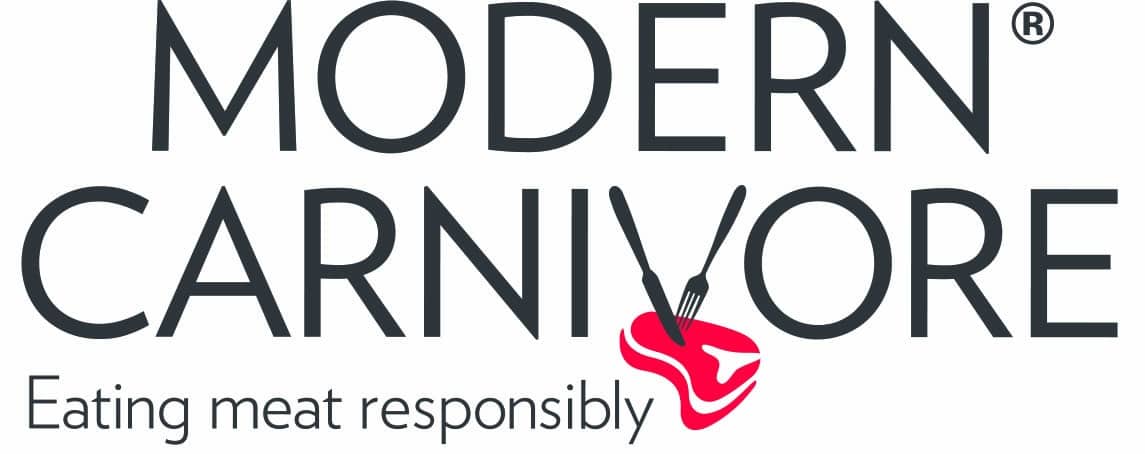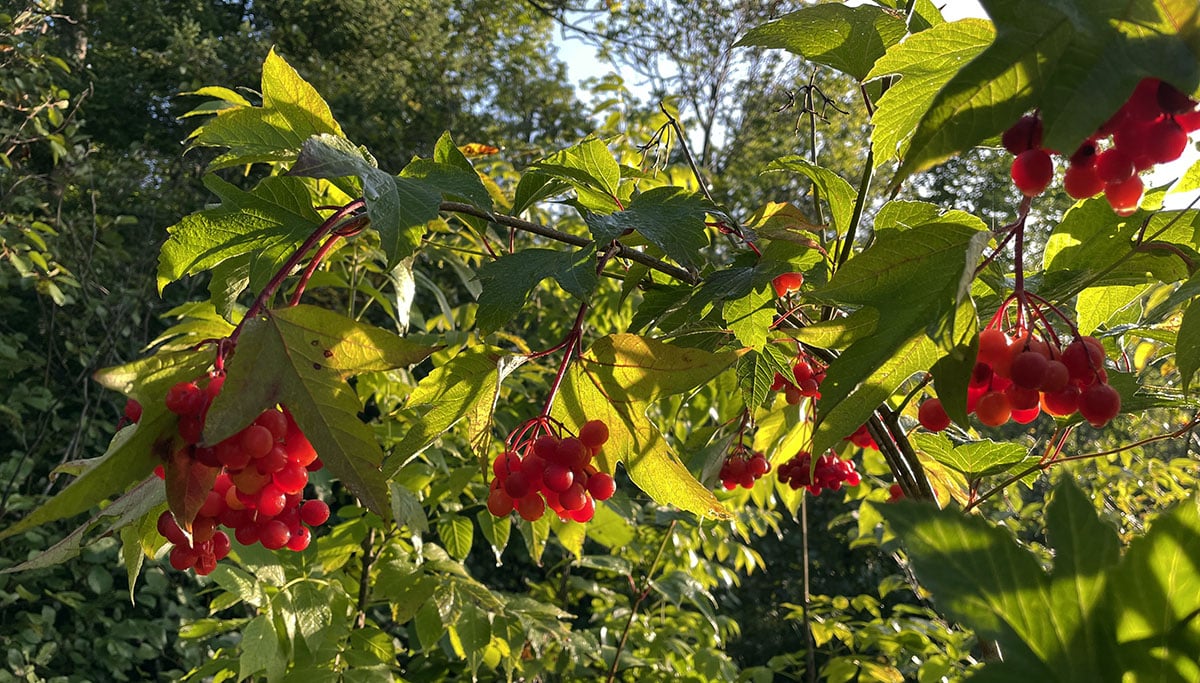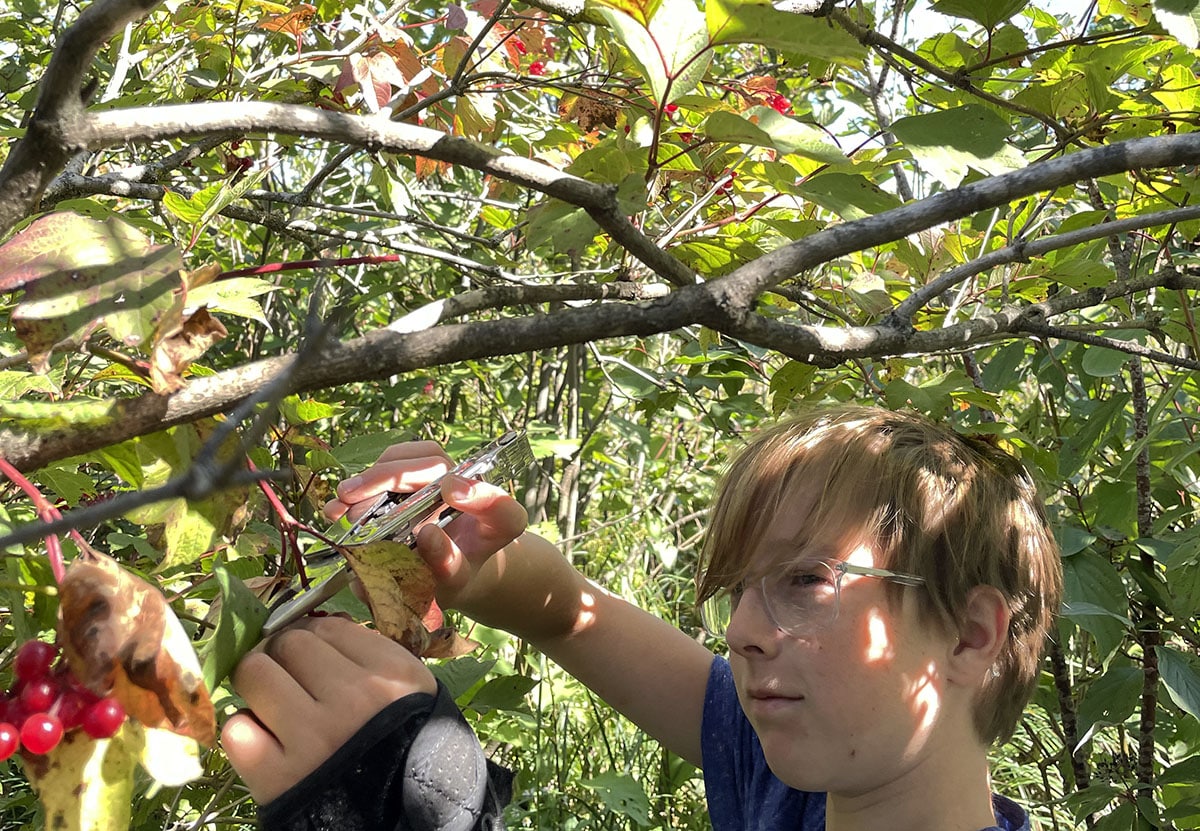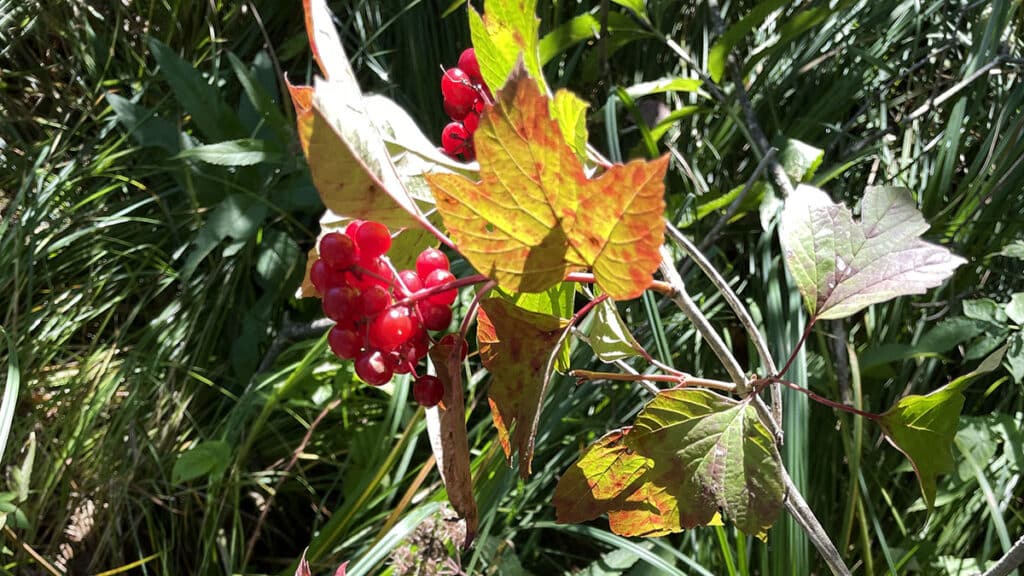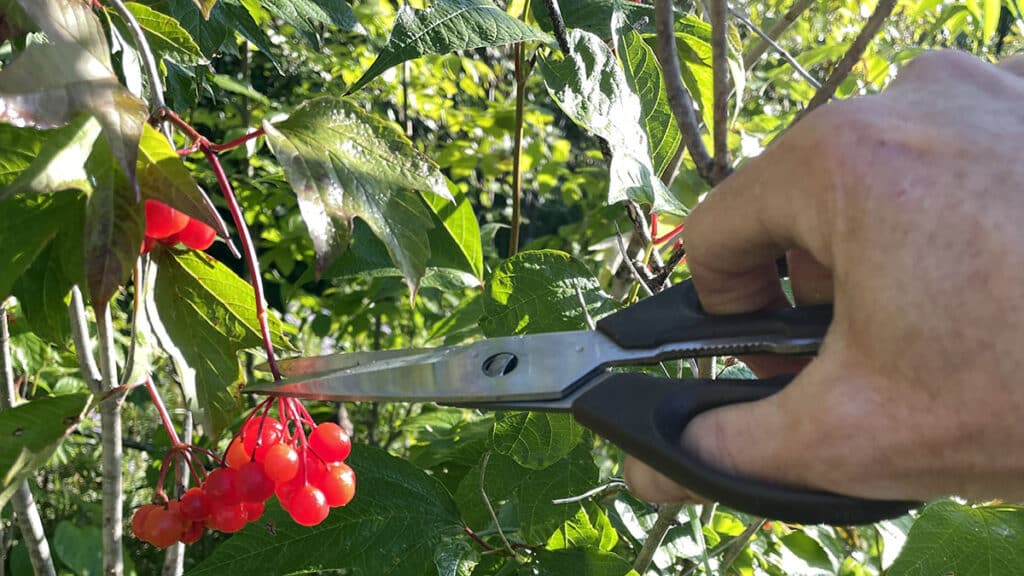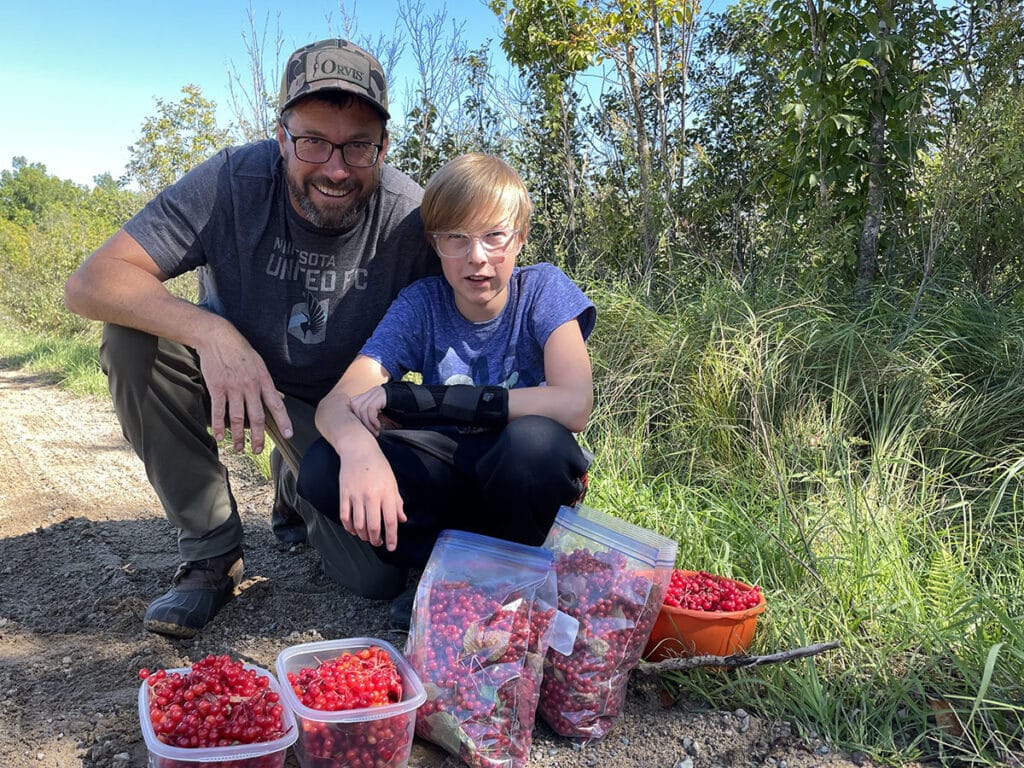Highbush Cranberries
Highbush Cranberries are a native shrub of North America and they thrive primarily in moist forested regions of the northern US (and many parts of Canada). Here in Minnesota they grow in all areas, except for the southwest region of the state. You can find them in the edges of forests, or clearings, but I often find them next to streams or swamps of the north woods. Highbush cranberries (Viburnum opulus var. americanum) aren’t actually cranberries at all. They get their common name from the fruit which has an appearance like that berry which is cultivated and sold in grocery stores during the holiday season.
Tart But Tasty
Just like the cultivated varieties of actual cranberries the “highbush cranberry” has a tart flavor profile. The seeds are rather large and can impart a bitter flavor so they should be discarded when you’re harvesting the fruit. Some also say that you should not cook the berries as the bitter flavor of the seeds can affect your juice-extract. Personally, I’ve always simmered my berries on the stovetop as a way to extract the juice. You can experiment with different methods and find out what you like best.
How to Identify Highbush Cranberries
Once you find the right habitat for the highbush cranberries you’ll want to look for the shrubs which are usually anywhere from 6 to 15 feet tall. The bark of the stems is gray-brown and irregular cracks begin to appear as it ages.
The leaves of highbush cranberry resemble those of maple trees in their shape. They transition from green to red in the fall when the fruit are ready to harvest.
The fruit which you might call a berry is actually a drupe. So, not only is this shrub not a cranberry, the fruit is not even really a berry! You now have a new word to add to your vocabulary – go impress your friends.
The drupes are red or orange with a flattened stone inside. They grow in clusters on short branches and each drupe is about 1/3 of an inch across.
There is a look-alike plant and that is Guelder rose (V. opulus var. opulus). This ornamental plant is European in origin and should be avoided.
Foraging For Highbush Cranberries
First you need to make sure you’re in the right area and that’s forested regions of the north. Look for the shrubs at eye-level and above. If it’s late summer / early fall the bright red colors of the fruit should really “pop” as you scan the drab colored woods.
Once you find a group of shrubs it’s rather easy to carefully trim the clusters of drupes from the branches. You only need a tool and a bowl. A knife will work but small garden snips or scissors are best. Be careful not to damage the shrub while grasping the branches.
Gather your clusters of drupes in small containers and then wash off any debris before preparing for consumption.
Check out the recipes below for ideas on how you can use highbush cranberries!
